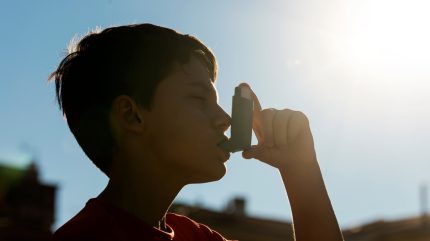
Poor conditions in historically redlined regions are contributing to health disparities, particularly for respiratory conditions such as asthma.
Previously redlined neighbourhoods are often exposed to lower-quality air, which can contain higher levels of harmful pollutants from industrial sites and high-traffic roadways. Health vulnerabilities are then exacerbated by poor housing conditions, including mould and damp, which can trigger asthma.

Discover B2B Marketing That Performs
Combine business intelligence and editorial excellence to reach engaged professionals across 36 leading media platforms.
The Cambridge English dictionary defined ‘redlining’ as “the practice of refusing to lend money, give mortgages, or sell home insurance to people living in poor areas, or of charging them high rates for this”. The practice was historically used to discriminate against minorities until the 1968 Fair Housing Act outlawed racially motivated redlining.
Although the act outlawed financial discrimination, the economic struggles have endured and left minority communities vulnerable to public health inequalities.
Sravani Meka, senior analyst at GlobalData, commented: “The legacy of redlining is a multifaceted public health crisis. The intersection of environmental hazards, poor housing conditions, and healthcare access gaps have created a perfect storm for chronic asthma in these communities.”
The relationship between redlined areas and poor respiratory health isn’t new. According to a 2020 study published in The Lancet, “historically redlined census tracts have significantly higher rates of emergency department visits due to asthma, suggesting that this discriminatory practice might be contributing to racial and ethnic asthma health disparities”.

US Tariffs are shifting - will you react or anticipate?
Don’t let policy changes catch you off guard. Stay proactive with real-time data and expert analysis.
By GlobalDataThere have been efforts in recent years to address these disparities. In Cincinnati, around 17% of children have asthma (above the US national average of 8.4% for boys, and 5.5% for girls). The Cincinnati Children’s Hospital noted that children from disadvantaged urban areas are particularly affected; it recorded six times the rate of asthma admissions for Black children, attributing the difference to ‘social, economic, and environmental factors’”.
The hospital recently worked on an improvement project with the Health Equity Network (HEN), which saw the asthma admission disparity gap reduce by 76%. The project focused on three key approaches: family-centred care and treatment plans; community partnerships; and reliable communication among providers.
The relationship between redlined areas and health inequalities is well accepted, and some progress is being made. However, Meka warns that obstacles persist: “While policy reforms are being implemented, convincing decision-makers to prioritise these vulnerable communities and ensuring healthcare providers are equipped to manage the complex needs of these patients will be crucial for long-term change. If successful, these reforms could significantly reduce asthma rates and improve quality of life in historically disadvantaged neighbourhoods.”





